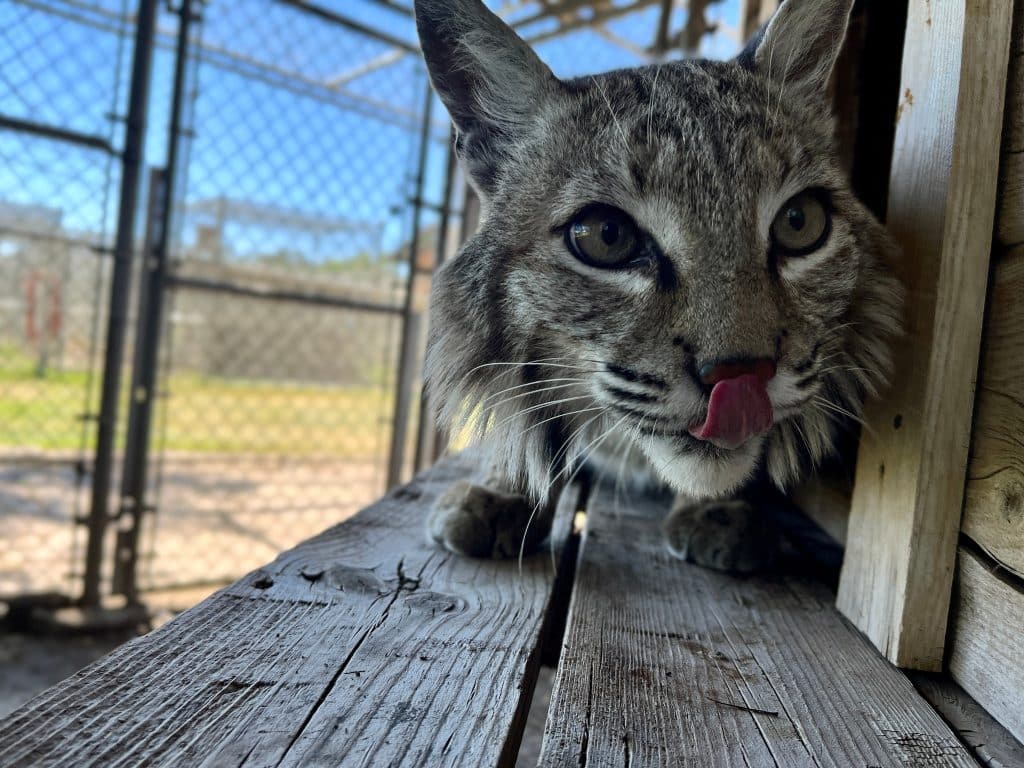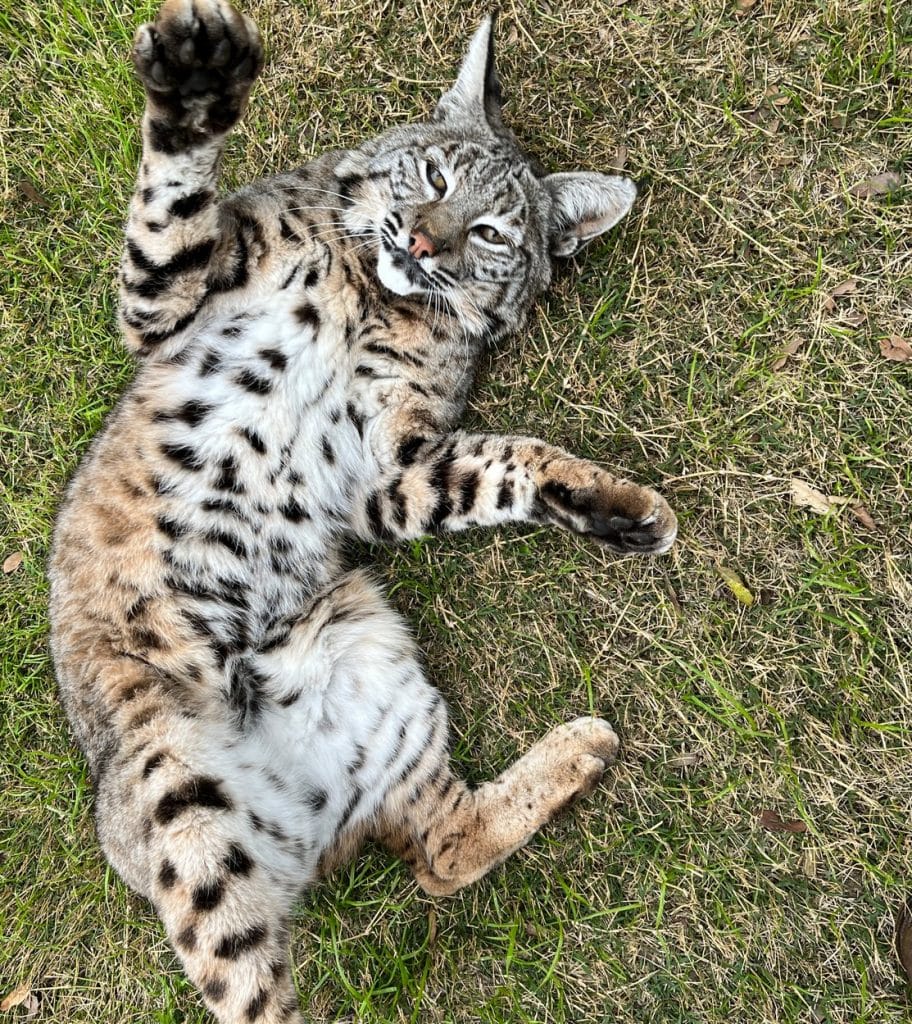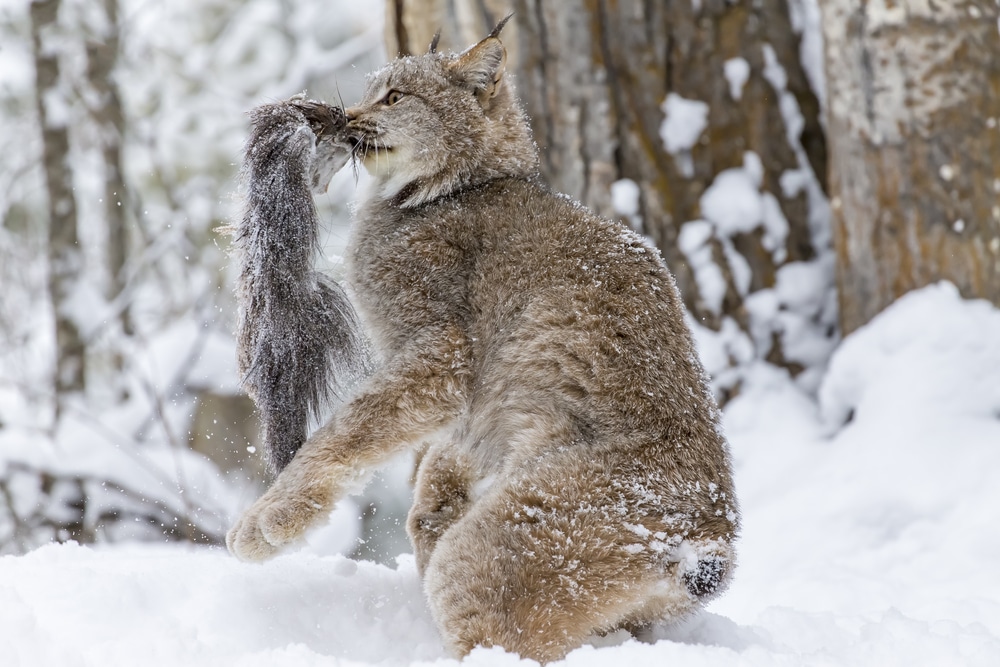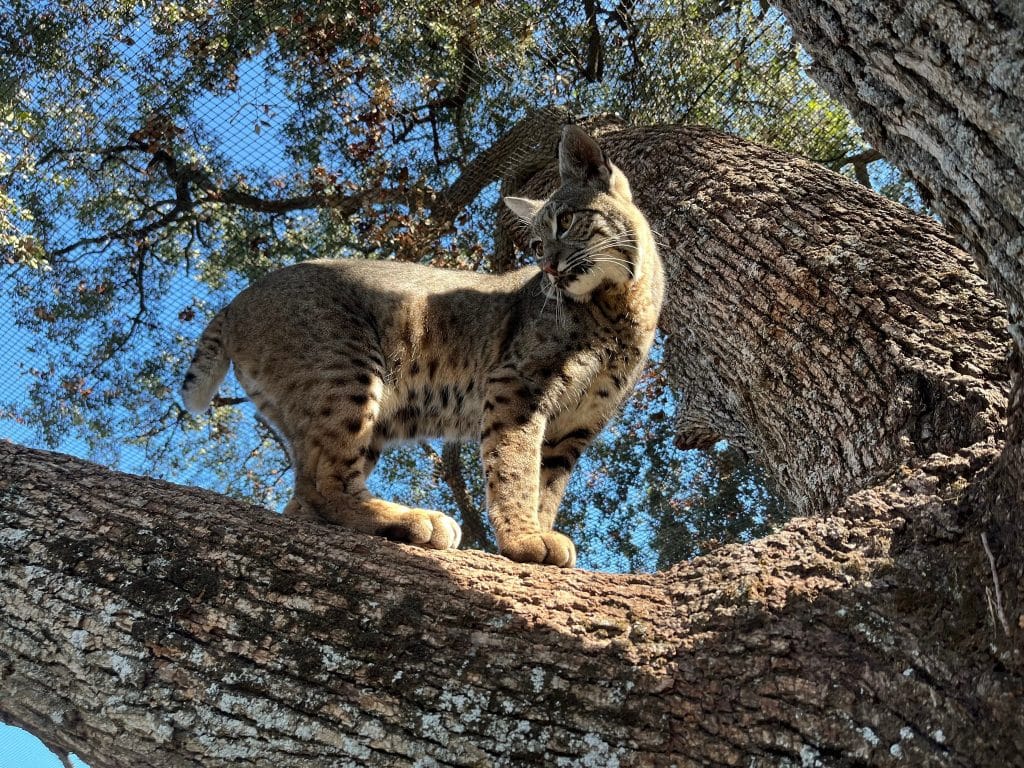
Bobcats are medium-sized wild cats native to North America. They are quite adaptable and resilient, with distinctive features like tufted ears and a short bobbed tail, from which they get their name. Bobcats are quite similar to the house cat in that they use whiskers like fingertips to feel their surroundings and judge whether an opening is large enough to fit through. They also have great night vision that allows them to see in the dark.
However, bobcats are wild animals, are twice as large as house cats, and have a more rugged and wild appearance. They also run faster, with speeds of up to 25 to 30 miles an hour.
Bobcats (Lynx rufus) look like pet cats – but they are much bigger, with shorter tails and tufts of black fur coming off the top of their years. Some people often confuse it with the Canadian lynx, which is understandable. They both are lynxes – and all have bobbed tails and ear tufts. But the Canadian lynx has massive, hairy feet that act as snowshoes.

Other lynx species are the Iberian or Spanish lynx and Eurasian lynx. These cats have spotted coats that provide excellent camouflage, allowing them to hide from prey until they are ready to pounce.
Bobcats are very sneaky when they hunt. They hide and wait quietly until they're very close to their prey before they jump out to catch it. This surprise attack works well for them, and they mainly eat small animals like rabbits, snowshoe hare, rodents, and sometimes even bigger animals like the snowshoe hare. Their strong back legs help them jump long distances to grab their prey. They can also climb trees and maneuver rocky terrain while pursuing prey.
Bobcats like to have their own space. They live alone and have a specific area they call home, which they mark with urine and feces to tell other bobcats to keep out. This way, they ensure enough food is available in their area just for them. Male bobcats have larger areas than females; sometimes, their home ranges will overlap with a few females.
Even though bobcats are usually quiet, they can make different sounds. During mating season, they might emit an eerie scream to attract a mate or growl and hiss if they're upset or scared. They also purr and meow softly when happy or when they talk to their kittens, just like our domesticated pet cats do.
Yes, they can be! Bobcats usually avoid people and are not considered a big threat to human safety. However, they are wild animals and can defend themselves if they feel threatened. While bobcats generally do not attack domestic animals, there can be exceptions, especially if a bobcat is hungry or in danger. It's always best to keep a respectful distance from wild animals, including bobcats, to avoid any potential risk.
These wild cats inhabit places with dense vegetation and plenty of prey. However, their native habitats are consistently shrinking because of human activities like building, farming, and the expansion of urban areas. Habitat fragmentation reduces the size of areas where bobcats can live and hunt, which is a big problem for them.

Bobcats are important because they help control the number of other animals, like rabbits, mice, and rats. This keeps everything in their ecosystem balanced, so no one animal group damages the environment. Occasionally, they may take on larger mammals like deer, especially the young or weak ones. This reduces over-grazing and prevents unmanageable spikes in their population.
Furthermore, bobcats also act like a health check for their habitat. If they are doing well, it usually means their home is healthy. But if they’re struggling, it might mean there are bigger problems in the environment that could affect other animals and eventually even people.
Here are some steps we can take to protect bobcats:

Protecting bobcats and the places they live helps keep our natural environment healthy. When we care for their homes, we also help many other plants and animals living in the same area. That's why it's important to ensure we don't fragment their habitat and try to keep big, connected areas of nature for them to live and thrive in.
Lions Tigers & Bears is at the forefront of wildlife conservation efforts. We advocate for the welfare and protection of big cats and other exotic animals through rescue, education, and advocacy. We also advocate for preserving the natural resources (including land and water) that support these animals.
Visitors to Lions Tigers & Bears have the unique opportunity to visit our bobcat habitat, where they can learn even more about these elusive and fascinating animals in a safe and educational environment.
Join us in our efforts to safeguard the well-being of both exotic and domestic animals. You can do so by donating in cash or kind, spreading awareness, or volunteering at our sanctuary just outside of San Diego, in Alpine, California.